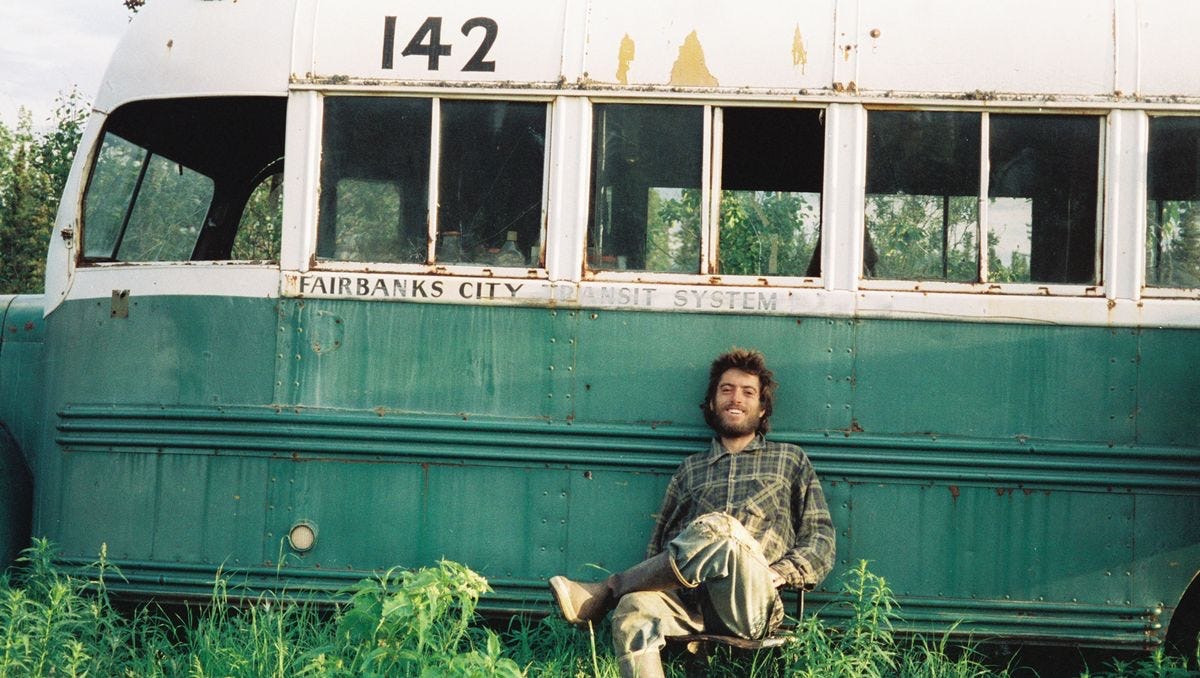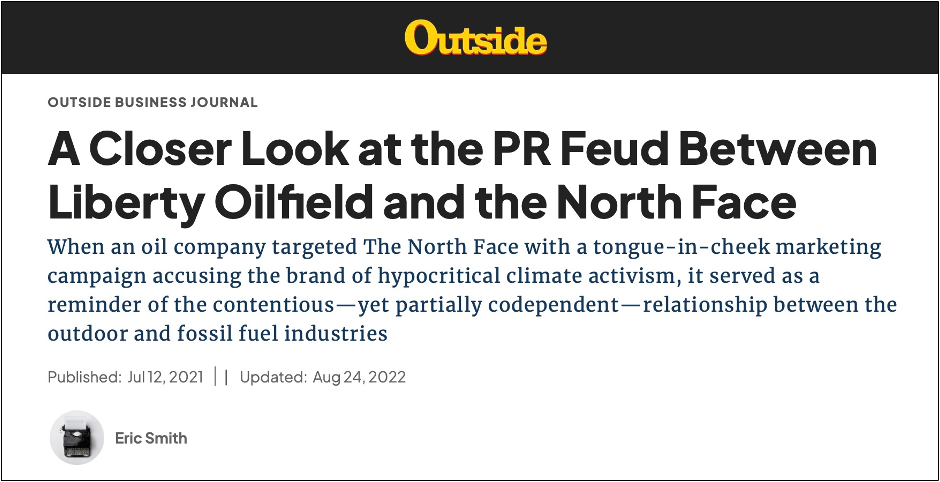
How Jon Krakauer’s ‘Into the Wild’ Changed My Life
One Sunday afternoon in March 1993, during my final semester at Rhodes College in Memphis, I took a break from studying in the library to peruse some periodicals.
I knew flipping through a magazine or newspaper would provide a much-needed respite from whatever English lit topic I was researching that week. What I didn’t know was how that decision to step away for 30 minutes would change my life.
As I looked through the collection of titles for something to read, the January 1993 issue of Outside magazine caught my eye. “Exclusive Report: Lost in the Wild” was written in big, bold letters across a cover image of equally big, bold mountains. Beneath it read these words:
On April 28, 24-year-old Chris McCandless walked off into America’s Last Frontier, hoping to make sense of his life. Four months later, he was dead. This is his story.

Intrigued, I grabbed the magazine, found a comfy chair, and flipped to the cover story, “Death of an Innocent,” by Jon Krakauer. And I wouldn’t move until I had read the entire 9,000-word article. After finishing the story, I closed the magazine, stared at the cover for a few seconds, and contemplated what I had just absorbed.
A range of emotions—sadness, confusion, curiosity, wanderlust—washed over me as late afternoon sunlight poured through the library’s leaded, stained-glass windows. I returned to the third-floor desk where I had camped out that day to resume my studies, but I knew nothing would, or could, ever be the same again.
I was two months from graduation and still unsure of what I wanted to do with my life, but suddenly, two thoughts were now swirling around my head: How could I someday live in Alaska? And how could I become a writer?
On that fateful day, I vowed to make both happen. And I believed the words I had just read, and the epiphany I had just experienced, would serve as my guide.
Now, 32 years later, it’s time to document how McCandless’s story and Krakauer’s writing shaped my life from that moment on.
The story of ‘Alexander Supertramp’
First, here’s a brief recap of Chris McCandless’s sad and controversial saga, initially told in Krakauer’s Outside magazine piece and later expanded into his best-selling book, “Into the Wild.”
After graduating college in 1990, McCandless abandoned his apartment, renounced all familial relationships and friendships, and hit the open road, hoping to find himself. He gave away his life savings and headed west to live a life of adventure. He was soon “reborn” under his new traveling name, “Alexander Supertramp.”
After two years roaming the Lower 48, primarily the Western U.S., and living that life of freedom he so fervently chased, McCandless made his way to Alaska—his dream destination for many months.
On a cold April day in 1992, McCandless hitchhiked from Fairbanks down the Parks Highway to the Stampede Road, about 10 miles north of the entrance to Denali National Park and Preserve. From there, he walked “into the wild.” No one saw him alive again.
That fall, hunters found McCandless’s decomposed body, along with his journals, books, and camping gear, in an abandoned Fairbanks city bus he had used for shelter the previous four months. Based on the emaciated state of his corpse, he had starved to death.
Krakauer’s story—first the article, followed by the much more detailed book published in January 1996—explores it all. He recounts McCandless’s life, including how and why he went off the grid, his family’s fruitless search for him, the places he went, the people he met, the mystery of how he died.
And, yes, the fatal mistakes McCandless made in his final weeks and months on this earth, namely his lack of preparation for living off the grid in Alaska.

Rather than focusing on the McCandless controversy—a big topic among Alaskans—I am using this post to celebrate “Into the Wild” as a masterclass in reporting, writing, and storytelling. And how it turned me on to pursuing adventure and a life in Alaska.
Krakauer’s descriptions of the state’s landscape, whether through his or McCandless’s eyes, were enticing enough to make me want to visit this faraway land and hopefully move there someday.
But while my dream of living in Alaska began with Krakauer’s story, it wouldn’t take shape for another year. And it wouldn’t happen until I moved thousands of miles in the opposite direction to another continent.
My long and winding road to Alaska
After college, I wanted to travel—inspired partially by McCandless and his adventures—so I spent a year in England through a temporary visa program for recent U.S. college graduates. I worked in the city as a law office clerk and shared a North London house with a dozen roommates from across North America.
Our tight-knit group of sojourners felt so arbitrary that we called our three-story flat the “Random House.” But when I reflect on that time and those people, I’m not sure that descriptor applies. I believe something else brought me there—perhaps brought us all there.
As it happened, several housemates were from Alaska. One of them, a good bloke named Joseph Stubbins, spoke with me extensively about his home state over pints at our local pub as a way to encourage me to move there. And he later helped me land a seasonal job with Gray Line of Alaska in Denali National Park.
I moved to Denali in June 1995, about two years after reading about McCandless. Here was my chance to live and work in Alaska, and be remarkably close—only 20 miles or so—to the lonely spot where he spent his final months.
That summer, I hiked part of the Stampede Trail, where McCandless’s walk “into the wild” began. I strolled the banks of the Teklanika River, where McCandless was turned back when he tried to leave the wild. I camped solo on a high alpine ridge overlooking the Stampede Valley, where McCandless died. It was three months of backcountry bliss.

Denali was such a special place that I spent four glorious summers there. It was life-changing for several reasons, namely meeting Sandy, now my wife, during my third season in 1997 (look for more blogs on Denali soon). She and I lived in Anchorage for seven years before deciding to move away and seek new adventures elsewhere.
In 2005, when we were packed up and headed along the Glenn Highway toward Canada, bound for our new life in the Lower 48, I grappled with one regret from my time in Alaska: I never ventured out to the bus where McCandless had died.
Hiking to the “magic bus,” as devotees called it, had become a pilgrimage following the release of “Into the Wild,” first the book in 1996 and then the film adaptation in 2007. Fellow tramps looking to pay tribute to McCandless would pose for photos in front of the bus as he had years earlier (see image at the top of this blog). They’d drink White Russians in honor of his favorite cocktail. They’d read passages from the books he loved.
Alaskans hated it. They already despised McCandless for his unprepared venture into the wild—something I understand but don’t wholeheartedly agree with because I admittedly romanticize his life. Now, too many visitors were getting injured, and several even died in their quest to find the bus. A few years ago, authorities finally removed it from the Stampede.
Before a helicopter whisked the bus out of the woods and moved it to a museum, however, several of my Alaska friends made it out there. I was jealous, but I just never found the right time or reason to go.
I didn’t realize it then, but I’ve learned to appreciate that the universe unfolds as it should. Maybe seeing the spot where McCandless suffered and died would’ve been too much to bear. It wasn’t meant to be part of my story.
The lasting legacy of ‘Into the Wild’
When I left Alaska almost 20 years ago, I closed that chapter of my life, but the legacy of “Into the Wild” endures in another, perhaps more meaningful way. Krakauer’s story about McCandless is one of the early pieces of writing that led directly to my chosen career, journalism.
After reading Krakauer—first “Into the Wild,” then his most famous book “Into Thin Air,” along with several of his articles—I wanted to do something similar, even if it was on a smaller scale.
I blogged about my career journey last year in a post titled “Writing for Something Other Than Money.” I mention several big career breaks, both of which coincidentally happened in Alaska, but I never cited the piece that started me down that path. It was Krakauer’s. From the moment I read his story about McCandless, I had to write.
And while my career didn’t entirely end up like his—he’s a New York Times bestselling author, and I’m clearly not—I did become a professional journalist, starting as a newspaper reporter in 2003 and continuing for 20-plus years with a variety of consumer and trade publications. My writing is now focused on “A Fan’s Notes” and the occasional freelance gig.
I also can’t help but smile when reflecting on where I started all those years ago and how my writing journey included a year of working for Outside Business Journal. That’s the former B2B publication owned by Outside—the same title that published “Death of an Innocent” nearly three decades earlier.
Seeing my byline under that iconic banner, even though it’s lost some cachet in recent years, felt like the validation of a lifelong pursuit.
Of course, as I pen this homage to a story that meant so much in my formative years, I no longer live in Alaska nor work as a full-time professional writer. However, I did both of those things, and did them well, so I continue to marvel at that fateful moment in the Rhodes College library more than three decades ago.
If I hadn’t stumbled upon Krakauer’s story that Sunday afternoon—if someone else in the library was reading it when I took a break, if the librarian had replaced it with a newer title, if another cover caught my eye first—who knows where I would’ve ended up?
Or maybe it was destiny, and nothing was going to alter my journey.
Regardless, I’m grateful for the way it happened. And I’m forever a fan of Chris McCandless’s remarkable yet sad story, Jon Krakauer’s stellar and inspirational writing, and how my discovery of both took me down a long, winding, and adventurous road I’m proud to have traveled.


Post a comment